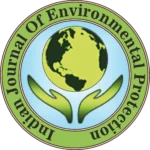IJEP 45(4): 382-388 : Vol. 45 Issue. 4 (April 2025)
Sandhya Wakdikar*, Tanuj Jajoria and Praveen Sharma
CSIR-National Institute of Science Communication and Policy Research, Pusa Campus, New Delhi – 110 012, India
Abstract
India’s population is on the rise and by 2050, it will be required to feed 1.6 billion people. Alongwith this, there is a constant decline in the cultivable land. Hence, there is an added burden of improving its agricultural productivity. The application of agrochemicals, like pesticides and fertilizers to boost agricultural productivity has been causing damage to the environment. Its use and overuse cause problems, including pollution and in turn, harm to mankind and animals. There is an urgent need to find alternatives to these agrochemicals. Various policies need to be implemented at the national and global levels to continue the agricultural output without causing harm to the environment. This article addresses the issue. A comparative analysis of the production and use of pesticides and fertilizers is provided. Suggestions for improving agricultural productivity without causing harm to the environment have been highlighted and alternatives to conventional agrochemicals have been proposed.
Keywords
Agricultural productivity, Agrochemicals, Fertilizers, Pesticides
References
- ICAR-NRCM. 2024. Vision 2050. National Research Centre on Meat, Indian Council of Agricultural Research, India.
- UNEP. 2017. Frontiers 2017 emerging issues of environmental concern. United Nations Environment Programme, Nairobi.
- Mordor Intelligence. 2023. India agrochemicals market size.
- Khurana, A. 2017. Plant protection, quarantine and storage in India. Employment News.
- FAO and WHO. 2014. The international code of conduct on pesticide management. Food and Agriculture Organization, Rome.
- Gupta, N., et al. 2021. Sustainable agriculture in India 2021: What we know and how to scale-up. Council on Energy, Environment and Water, New Delhi, India.
- Sarkar, S., et al. 2021. The use of pesticides in developing countries and their impact on health and the right to food. European Parliament, Policy Department, Directorate-General for External Policies, Belgium.
- Directorate of Plant Protection, Quarantine and Storage, Government of India. Statistical database. Available at: https://ppqs.gov.in/statistical-database.
- Mehta, H. 2023. Global footprint: India 2nd largest exporter of agrochemicals. Crop Care Federation of India, New Delhi. Available at: https://www.indian chemicalnews.com/agrochem-summit-2024/imgs/HM_CCFI_Export_Final3.pdf.
- FAO. 2024. Pesticide use. Food and Agricultural Organization. Accessed on 21 June 2024.
- Ayilara, M.S., et al. 2023. Biopesticides as a promising alternative to synthetic pesticides: A case for microbial pesticides, phytopesticides and nano-biopesticides. Frontiers Microbiol., 14: 1040901. doi: 10.3389/fmicb.2023.1040901.
- SkyQuest Intelligence. 2024. Biopesticides market insights.
- Agribusiness Global. 2023. What’s driving biopesticide adoption growth in India?
- Olson, S. 2015. An analysis of the biopesticide market now and where it is going. Lux Research Inc., Boston, USA.
- FAO. 2019. International code of conduct for the sustainable use and management of fertilizers. Food and Agriculture Organization, Rome.
- Ministry of Finance, Government of India. 2025. Economic survey 2024-25 statistical appendix. Available at: https://www.indiabudget.gov.in/economicsurvey/doc/Statistical-Appendix-in-English.pdf.
- Mordor Intelligence. 2024. Biofertilizer market size- Industry report on share, growth trends and forecasts analysis upto 2029.
- Garcha, S. 2023. Present scenario- Status of biofertilizer industry in India. In Metabolomics, proteomes and gene editing approaches in biofertilizer industry. Ed S. Kaur, V. Dwibedi, P.K. Sahu and G.S. Kocherpp. Springer, Singapore. pp 21-36.
